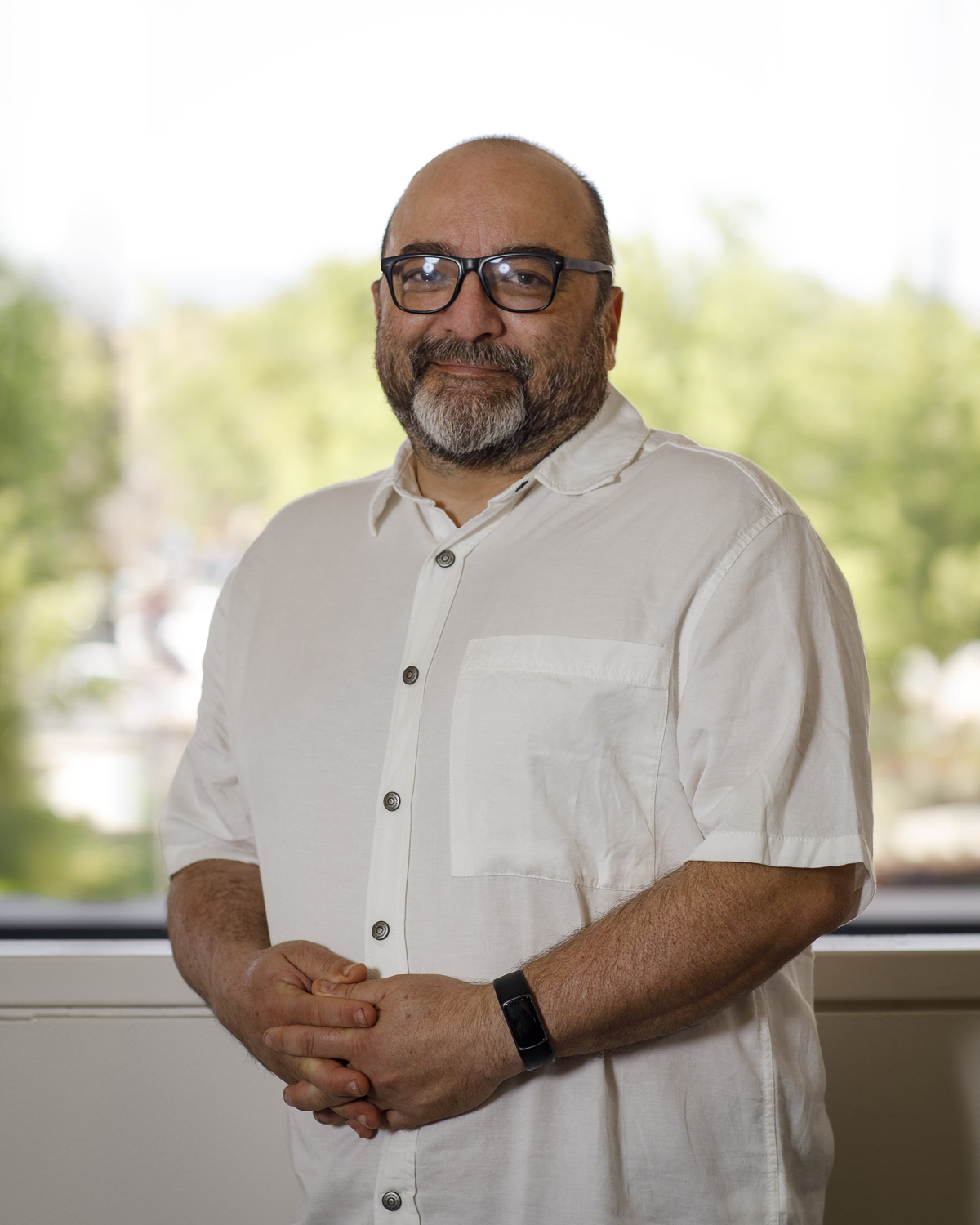
LIVERMORE, Calif. — For a man whose job is to envision outcomes, Ali Pinar says he was completely surprised when the Society for Industrial and Applied Mathematics named him one of its 2023 Fellows.
“When I was pursuing my PhD, if somebody had told me I would become a SIAM Fellow — no way,” Pinar said. “You just piece these things together one brick at a time. You’re building something in your career, and receiving that recognition is just surprising.”
Pinar earned his bachelor’s and master’s degrees from Bilkent University in his native country, Turkey. He then came to the U.S. and earned his PhD in computer science at the University of Illinois.
“I interned at Sandia as a PhD student,” he said. “I loved the culture at Sandia, and there were multiple people whom I admired and thought, ‘When I grow up, I want to be like them.’”
Studying a diverse range of systems
For the past 15 years, Pinar has been studying network science at the Labs, and also obtained U.S. citizenship along the way.
“Networks can take various forms, such as physical networks like power grids, cyber networks, or water networks. These networks have significant consequences if they fail,” Pinar explained. “There are also biological networks within bodies. We look for abnormal behaviors. How can I make it more resilient? For instance, if the simultaneous failure of two power lines would lead to a disaster, how can I fix that problem by building additional lines or using my current resources in a way so that I don’t put all my eggs in the same basket?”
Pinar said he and his fellow network scientists look for patterns, potentially preparing for worst-case scenarios. For example, he can identify malicious actors in cyberspace by identifying behavior on accounts managed by the same individuals or on accounts that are bots. This might occur when a product review on a shopping site is followed by 10,000 more reviews of the same product, all around the same time. It’s all a matter of looking for abnormal behavior that deviates from the norm.
“But to define what’s abnormal, you need to understand what’s normal,” Pinar continued. “If you look at a functional unit, like protein interaction networks, you understand how proteins function in a body. If you observe a cluster of proteins suddenly appearing at the same time, you know they must have a purpose. It cannot be mere coincidence. Then you begin to investigate: What are they doing concurrently? What’s the same time? What is the function of this protein? What is the pathway? How do they interact?”
Recognized for leadership
This field of study has ignited Pinar’s imagination and intellect for years. However, his scientific work wasn’t the only thing that attracted SIAM’s attention. The organization named him a Fellow “for theoretical, algorithmic, and application impacts, and community leadership in combinatorial scientific computing and network science.”
“I started a workshop within SIAM on network science,” he said of the annual meeting that draws more than 100 network professionals each year. “People who are doing statistics or more applied sciences like cybersecurity, I thought, ‘Why don’t we bring everyone together, build a platform for like-minded people and discuss things in that way?’ I launched the workshop in 2003, and now serve as the Chair of the Steering Committee. I enjoy the interactions, especially witnessing new people, particularly younger PhD students, forging connections and getting advice from everyone. They’re undergoing the same things you’ve been through, and you can help them. I like that sense of community and how people share their ideas.”
It’s this sense of community that Pinar prizes in his field and at Sandia.
“I love interdisciplinary work,” he said. “It’s not just about publishing; it’s about collaborating with the domain experts and making a real impact.”